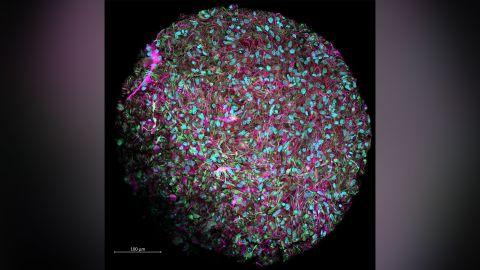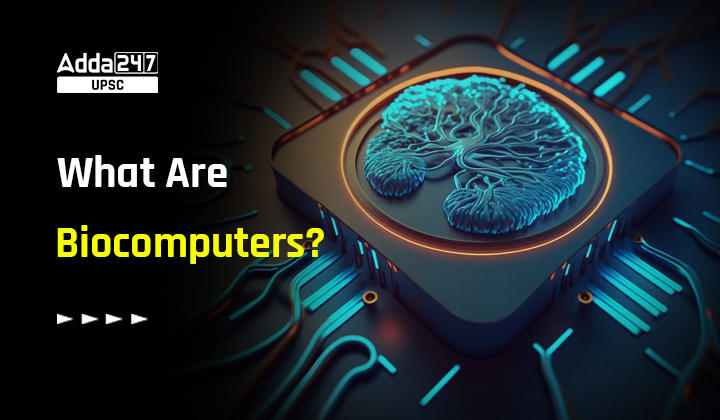Table of Contents
In This Article, ”What Are Biocomputers?”, We Will Discuss: What Are Organoids?, What is the Idea Behind Bio Computer?, Opportunities For ‘Bio Computer’ Related Researches?, Possible Uses Of Organoid Intelligence(OI), etc.
Bio Computers In News
- Scientists at Johns Hopkins University recently outlined a plan for a potentially revolutionary new area of research called “organoid intelligence”, which aims to create “biocomputers”.
- In this, brain cultures grown in the lab are coupled to real-world sensors and input/output devices.
- The scientists expect the technology to harness the processing power of the brain and understand the biological basis of human cognition, learning, and various neurological disorders.
Quantum Computing in India: How to Achieve Quantum Supremacy?
What Are Organoids?
- In a quest to develop systems that are more relevant to humans, scientists are building 3D cultures of brain tissue in the lab, also called brain organoids.
- So, Organoids are lab-grown tissues that resemble organs.
- These “mini-brains” (with a size of up to 4 mm) are built using human stem cells and capture many structural and functional features of a developing human brain.

- These Organoids have been used in labs for nearly two decades, where scientists have been able to avoid harmful human or animal testing by experimenting on the stand-ins for kidneys, lungs and other organs.
- Brain organoids don’t actually resemble tiny versions of the human brain, but the pen dot-size cell cultures contain neurons that are capable of brain like functions, forming a multitude of connections.
- Scientists call the phenomenon “intelligence in a dish.”
- However, the human brain also requires various sensory inputs (touch, smell, vision, etc.) to develop into the complex organ it is, and brain organoids developed in the lab aren’t sophisticated enough. The organoids currently also don’t have blood circulation, which limits how they can grow.
Nuclear Fusion and the Future of Clean Energy
What is the Idea Behind Bio Computer?
- The JHU researchers’ scheme will combine brain organoids with modern computing methods to create “bio-computers”.
- They have announced plans to couple the organoids with machine learning by growing the organoids inside flexible structures affixed with multiple electrodes (similar to the ones used to take EEG readings from the brain).
- These structures will be able to record the firing patterns of the neurons and also deliver electrical stimuli, to mimic sensory stimuli. The response pattern of the neurons and their effect on human behaviour or biology will then be analysed by machine-learning techniques.
- Recently, scientists were able to grow human neurons on top of a microelectrode array that could both record and stimulate these neurons. Using positive or negative electric feedback from the sensors, they were able to train the neurons to generate a pattern of electrical activity that would be generated if the neurons were playing table tennis.
PRaGeD Mission: An Initiative by CDFD
Opportunities For ‘Bio Computer’ Related Researches?
- While human brains are slower than computers at, say, simple arithmetic, they outshine machines at processing complex information.
- Brain organoids can also be developed using stem cells from individuals with neurodegenerative diseases or cognitive disorders.
- Comparing the data on brain structure, connections, and signalling between ‘healthy’ and ‘patient-derived’ organoids can reveal the biological basis of human cognition, learning, and memory.
- They could also help decode the pathology of and drug development for devastating neurodevelopmental and degenerative diseases such as Parkinson’s disease and microcephaly.
Possible Uses Of Organoid Intelligence(OI)
- The most impactful contributions of organoid intelligence might manifest in human medicine, the researchers said.
- Brain organoids could be developed from skin samples of patients with neural disorders, allowing scientists to test how different medicines and other factors could impact them.
- With OI, we could study the cognitive aspects of neurological conditions as well. For example, we could compare memory formation in organoids derived from healthy people and from Alzheimer’s patients, and try to repair relative deficits.
- We could also use OI to test whether certain substances, such as pesticides, cause memory or learning problems.
- Brain organoids could also open up a new way of understanding human cognition.
How Effective is Gene Therapy for Cancer Cure?
What Next?
- Currently, brain organoids have a diameter of less than 1 mm and have fewer than 100,000 cells (both on average), which make it roughly three-millionth the size of an actual human brain.
- So scaling up the brain organoid is key to improving its computing capacity – as will incorporating non-neuronal cells involved in biological learning.
- Second, researchers will also have to develop microfluidic systems to transport oxygen and nutrients, and remove waste products.
- These hybrid systems will generate very large amounts of data (i.e. of neural recordings from each neuron and connection), which researchers will need to store and analyse using ‘Big Data’ infrastructure.
- They will also need to develop and use advanced analytical techniques (with help from machines) to correlate the structural and functional changes in the brain organoids to the various output variables.



 TSPSC Group 1 Question Paper 2024, Downl...
TSPSC Group 1 Question Paper 2024, Downl...
 TSPSC Group 1 Answer key 2024 Out, Downl...
TSPSC Group 1 Answer key 2024 Out, Downl...
 UPSC Prelims 2024 Question Paper, Downlo...
UPSC Prelims 2024 Question Paper, Downlo...




